|
CoronaVirus: Herbal protocol and Understanding By: Alana House- community herbalist Alright, I’ll admit that I may have gone down a coronavirus wormhole. Each thing I learned lead me down a path of wanting better understanding which lead me down more paths and now I feel like a sparkly eyed epidemiologist wanna be. In general I feel alright about it. I have herbal allies on hand, myself and my family are healthy and vital, and I am informed and nourished- but- I'm a little bit of a prepper (i know, i know) and the potentiality of a quarantine has me thinking about some things. I wanted to condense and consolidate my knowledge here with the hopes of supporting those who read it with some understanding and herbal helpers to ideally stay well and, if the virus does happen in your world, have some herbs on hand to support your body through the illness and healing process. I. What is CoronaVirus? CoronaVirus is a strain of virus’s that cause respiratory distress. There are several strains, this one is COVID-19. SARS (sudden acute respiratory syndrome) is another strain of CoronaVirus that caused an epidemic in 2003 because of unsafe chicken care and handling. Corona virus’s are highly adaptable and are able to continually make new variants of itself, which is why it has been so hard to treat and contain. The statistics show that of those who become infected, only 18% experience a severe reaction. The people who are most affected and at risk are the elderly, those with compromised or weakened immune systems, and those with pre-existing lung and lymphatic conditions. II. How does it affect the body?: This strain of coronavirus first affects the body by attacking the cilia of the lungs. Cilia are small hair-like organisms in the lungs that move in an upward, wave-like motion. The purpose of the cilia is to keep contaminants out of the lungs by acting like a filter. By attacking and destroying the cilia the virus allows fluid to settle into the lungs, which could cause secondary infections like pneumonia and bronchitis. This attack on the body causes a surge of immune response to that part of the body. An immune response is basically inflammation. The inflammatory response can cause what is called a ‘cytokine storm’ which weakens your body's immune system. The corona virus also puts an attack on the lymphatic system and kidneys, the immune and hormone regulating system and the body’s filters. It weakens the systems that keep us well. III. Prevention: I wanted to go first into prevention before I went into symptoms. Prevention is the ideal scenario.
Secondary Infections:
V. The Stages of Illness: 1. Immune Boosting and Support: The ideal scenario is to stay uninfected and well. Herbal support information for Immune Building, Liver Support, and Lymph support will be in the last section. 2. Early Stage: Okay, you are infected but it has not yet settled into your lungs. This phase is cold, damp, depressing on body, fatigued. You may have a fever with chills or not sign of fever. You have a dry cough, dry throat, tight chest. Possible nausea. This is when you want warming remedies. At this point you really want to do a push on immune boosting and/or lymphatic flushing. (herb info in last section) 3. Acute Stage: The virus settles into the lungs. Stop taking immune boosters because you don't want to cause more of an inflammatory response in the body. Fever has settled in. You want to let the fever do its work to kill off the virus. A cough without an expectoration of mucus or a deep rattling cough with yellow sputum. Digestive upset. Bloating/diarrhea/constipation. Tight chest. Shortness of breath. Coughing when still and asthma like breathing while moving. At this point you want purgatives, cooling remedies, and expectorants. (herbal info in last section) 4. Severe Stage: Very labored breathing, shallow breathing, fainting, cold sweaty limbs, ashtmatic breathing. You want to keep warm but also allow your skin to be exposed to sweat out toxins. Watch for secondary illness and signs of kidney distress which include: water retention, pain in lower back, and decrease in urine output. At this point, if you are not able to be treated in a medical setting, you want drying and drawing lung support (in lat section). 5. Recovery Phase: This is the point where you are slow and easy on yourself. Eat easily digestible food. Take iron building tonics. Hydrate. Don't overdo it. Lung illness, as we all know, is exhausting. Adaptogenic herbs are good for this time to support your body systems in getting back to their normal (in lat section). VI. Herbal Support:
Instead of offering exact formulas I am going to offer groupings of herbs that you can choose from according to accessibility and preference. You will notice that many of these herbs overlap in sections. My prefered way to take medicine is in tincture form because it is potent, shelf stable, and you don’t need to take alot. Vitamin C is an effective immune booster. I recommend finding a brand that doesn't contain sugar. The dosage for immune support is 2000mgs 4 times per day and 500-1000mgs 4 times per day for children ages 4-6. Link to Cordyceps tincture the I love is (here).
Elder Leaf Decoction Recipe by Steven Buhner: Elderleaf decoction is a wonderful immune stimulant and can be easily made by you. Boil 4 ounce of dried elderlef in 2 quarts of water. Boil down by ½. Cool and strain. Cook down by ½ again. Cool. Measure and add equal parts 100 proof vodka for preservation. Dosage is 1-2 tablespoons 2-4 times per day. I hope that this information is helpful and offers some peace of mind in information. I do not believe that you should get overly upset and worried, worked up or panicked. Viruses come along all of the time. This one is being particularly hyped and sensationalized in the media, and while we should all exercise common sense and caution, living in fear is not good for your health. Be well. Please feel free to share this as desired. If you would like a PDF version just email me at [email protected] Disclaimer: I am not a medical doctor. This information is not FDA approved. Please check in with your health care professional about using herbs if you are on medication, pregnant, nursing, or health compromised. References:
5 Comments
Usnea, (ooh- sney- uh) also called old woman's beard. is an amazing and wildly cool looking lichen. Lichens are an algae fungus combination. Usnea is an incredible medicinal, an easy to make yourself medicine, and a good ally to have on hand for the times of living during a viral pandemic. Where can you find usnea and sustainable harvesting practices: Usnea can be found all over the world. It likes to grow in moist environments and places with clean air. The trees that host it are coniferous trees like pine, juniper, and spruce as well as on hardwoods like oak, walnut, hickory, pear, and apple. You can tell its the real deal usnea if you gently pull on a strand of it and there's a white thread looking core. (I posted a video on my instagram page here) I alway feel the need to vouch for the plants and send out a reminder about sustainable harvesting practices. For this lichen, which is relatively slow growing, you never want to harvest directly from the trees. The only way I harvest it is off of fallen limbs after a good wind. I also never harvest the entirety of anything. My rule is to take less that 1/3 of any aerial plant (less that 1/5 for roots)- not only for proper seed distribution and natural composting, but for the energetics of having regard for the natural world and not being a greedy jerk. You also definitely need to consider the cleanliness of the area. Usnea is a bioaccumulator so if you're harvesting from a toxic place you are making toxic medicine. Is it close to the road where fumes and roadway dust settle? does the area have any industrial or farm runoff going to it? do dogs pee there? Be mindful of where you are harvesting. If you wouldn't eat some violets, or ground foliage then its not clean enough to gather medicine from. The medicine of unsea: Usnea is very a very valuable medicine to keep in your home apothecary. She is an anti- gal. She is: -Anti-viral -Anti-microbial -Anti- bacterial -Anti-fungal -Its an antibiotic against gram positive bacteria (here's link to the difference between gram+ and gram-) -Vulnerary (an herb used for wound healing)(I am a fan of fancy words used to describe plant actions) Usnea can be used both internally as a tincture or externally as a salve or compress. Some specific treatments include; staph, strep, wound healing, sore throat, and fungal infections. Anything with heat and dampness. Usnea has a special affinity for: -treating virus's -respiratory illness -allergy symptoms -sinus infections -kidney and bladder infections -pneumonia Because usnea is antimicrobial it is a wonderful medicine for all types of pathogens. Most pharmacuetical antibiotics destroy all bacteria, including the good ones, but usnea and its anti-biotic properties do not kill of good bacterial and gut flora. Usnea, if used as a whole plant medicine, has no known side effects but should not be used during pregnancy. How to make an Usnea dual extraction:
Since usnea is a lichen it needs to be extracted 2 way to get its full range of medicinal benefits. Some properties are alcohol and water soluble and some are heat soluble. What will you need? -a clean jar with lid -usnea lichen (fresh and wilted or dried) -alcohol of choice (50% strength I always tincture in 100 proof non GMO Swedish vodka) -good drinking water - a small pot for stovetop use -amber glass bottle for storing finished tincture You want to tincture unseat at a1:5 ratio. For example, if you have 3 ounces of usnea then you will use 15 ounces of 50 percent alcohol. Process: You guys, this is so easy -I love sharing with you how accessible it is to make your own medicine! Chop up or grind usnea and add to clean jar. Pour in alcohol. Store in a cool, dark, dry place for 2-6 weeks. The medicine will be ready for the next step in as soon as 2 weeks but will continue to gain potency if left longer. For the second extraction: Strain plant matter from alcohol through a wire strainer and cheese cloth. Put alcohol in a lidded jar and set aside. Put plant matter in small pot. Add the same amount of water to the pot that you used for the alcohol extraction. For example, if you used 15 ounces of alcohol in your tincture then add 15 ounces of water. Simmer on very low temp until 2/3 of the water has cooked out. If you are using 15 ounces of water you should be left with about 5 ounces of "tea". Strain the plant matter from the water in the same way as before. Compost plant matter with gratitude. Add remaining "tea" into the jar of tincture. You will have 20 ounces of tincture if you used the same measurements as the example. Your completed medicine will be about 39% alcohol. You now have a full spectrum usnea tincture!!! YAY!!! How easy was that?!?! Store it in an amber glass bottle for the longest shelf life and most potent medicine. Sunshine degrades the healing properties of plants in storage. So, now that you know how awesome usnea is and what an ally it could be for you and those you love in times of sickness and during times of global scare for pandemic, I hope that you, with deep reverence for our mama earth, go out and gather some lichens and make some good medicine. 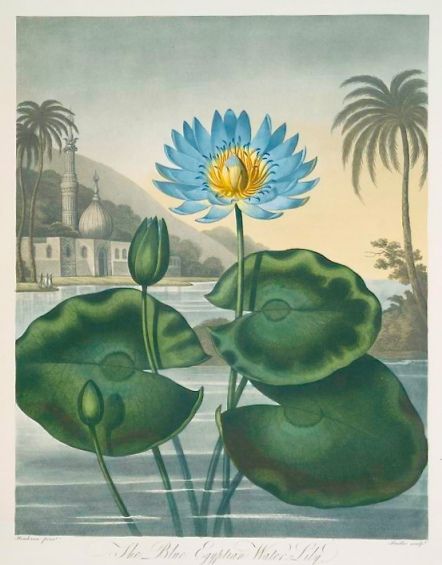 History: Blue Lotus has a long history of use and adoration across the continents. It has been used by many cultures including those of the Egyptian, Myan, Syrian, and Thai peoples. The ancient Egyptian peoples are most well known for their love of the Blue Lotus flower, they have even discovered the flowers laid upon the body of King Tut inside of his tomb. Women and pharaohs would wear head dresses adorned with Blue Lotus flowers and they had many uses for it in both social and spiritual practices. The flowers of Blue Lotus would be infused into wines- this preparation would be used during gathering thought to be what would be considered an orgy and durings piritual practice because of its euphoria inducing effects. Medicinal Properties: Blue Lotus is adaptogenic; meaning it will adapt to the needs of the person taking its medicine. For example; if you are in need of deep relaxation it will act in that way- but if you are in need of a little bit of energy it will not make you tired. Its effects are diverse:
 Effects: Blue Lotus does not produce a strong and overly heroic effect. It is subtle and divine. When imbibed upon it produces a mildly euphoric effect, raising awareness and tranquility. Calming anxiety and tension, it is wonderful during social gatherings when one might feel overwhelmed. It calms frayed nerves. Blue Lotus offers and supports introspective work too. Aiding in meditation and raising intuition. Blue lotus evokes vivid dreams that serve to unwind stuck subconscious and conscious patterns. Healing dreams is the best way I know how to put it. Blue lotus can enhance tactile stimulation too. Giving a warmth and comfort to touch, acting as an aphrodisiac and is wonderful to use during love making. In ancient Egypt it was used as an entheogen during religious ceremonies because of its effects on the pineal gland which allows us to reach higher levels of consciousness and connection to the divine spirit. How to Use Blue Lotus:
Recipe: Blue Lotus infused wine: Ingredients:
Process: Grind down flowers using a mortar and pestle, scissors, or a coffee grinder. You want the petals to be fine but not a powder. Add the ground petals to a quart sized mason jar. Fill jar with wine.Save corked wine bottle. Shake vigorously. You want to get it oxygenated. Allow to soak in a cool dark place for at least 2 weeks. You can soak it for up to a month. Shake daily. Once ready to drink strain through a mesh strainer. I like to strain a second time through cheesecloth so that there isn't a lot of sediment. Using a funnel or lipped measuring cup pour the strained wine back into the wine bottle. Label and enjoy. Cultivation: Blue Lotus is an aquatic plant. It grows best in zones 10-12, but can be cultivated in a greenhouse in other growing zones.
Blue Lotus flowers will bloom for 3-5 days and will move with the sun and close at night, much like a sunflower, which is why ancient people deemed it the sacred flower of the sun god. To grow from seed: Things You Will Need
Process: 1) Place 2 inches of soil in the bottom of a waterproof container at least 6 inches tall. Slowly add warm water until it reaches about 1 inch above the top of the soil. Allow the soil to settle and then press it down gently to compact it. 2) Sow the seeds on the surface of the soil on the floor of the container. Space them evenly, at least 1 inch apart, with no two seeds touching each other. Lightly sprinkle a thin layer of white sand over them. 3) Keep the container in a warm, sunny location until the seeds sprout in several days. The sprouts look like thin grass initially. Wait until a sprout forms one or two leaves that float on the surface of the water before you pluck it out. Plant it in a separate container and then once the leaves mature more move it to deeper water, about 10-15 or so inches. Tips
Although I am a community herbalist and healer I am not a medical doctor. I am not attempting to diagnose or treat major medical conditions or offer medical advice. These statements are not approved by the FDA. |
AuthorAlana House is a trained herbalist, forager, medicine maker, and plant person. Archives
January 2024
Categories
All
|

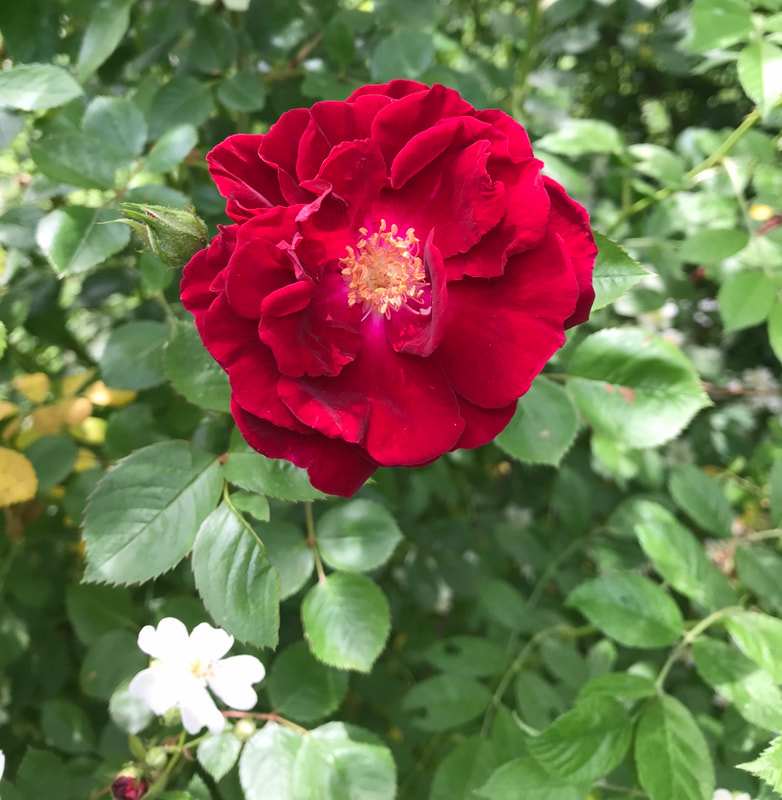
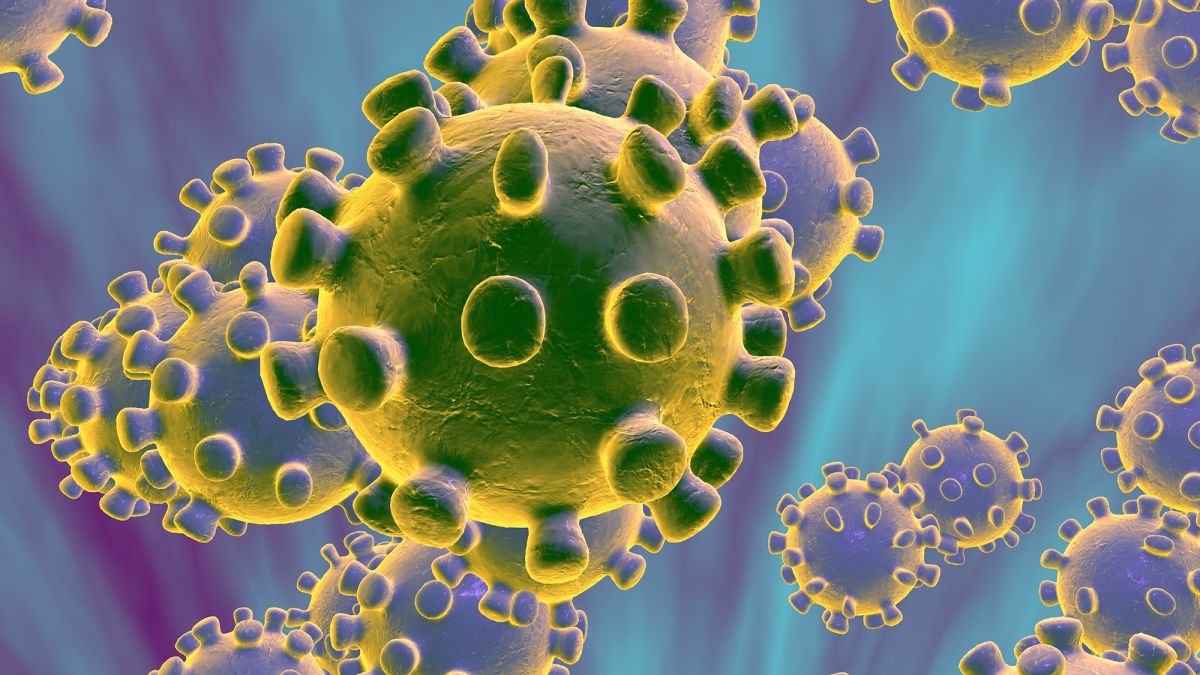
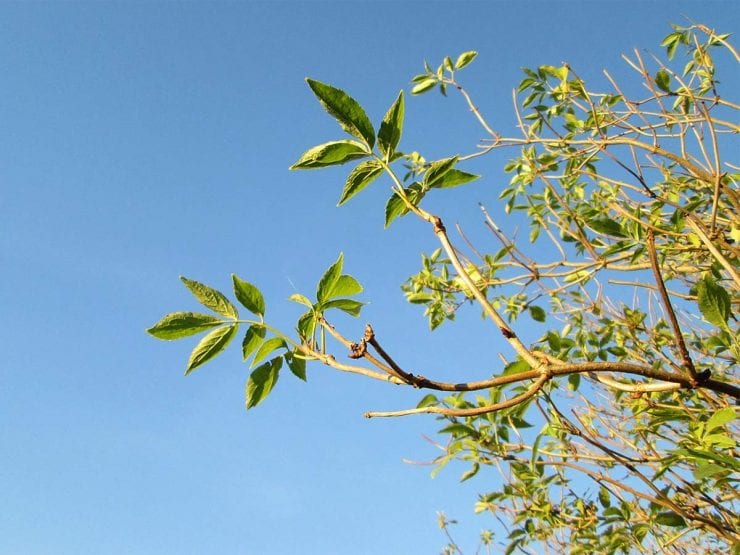
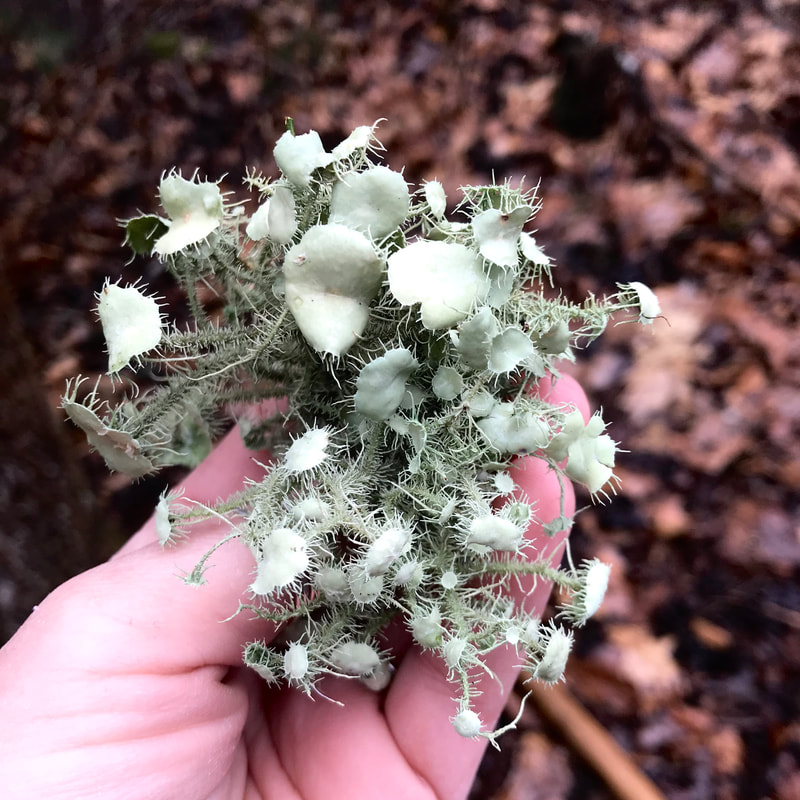
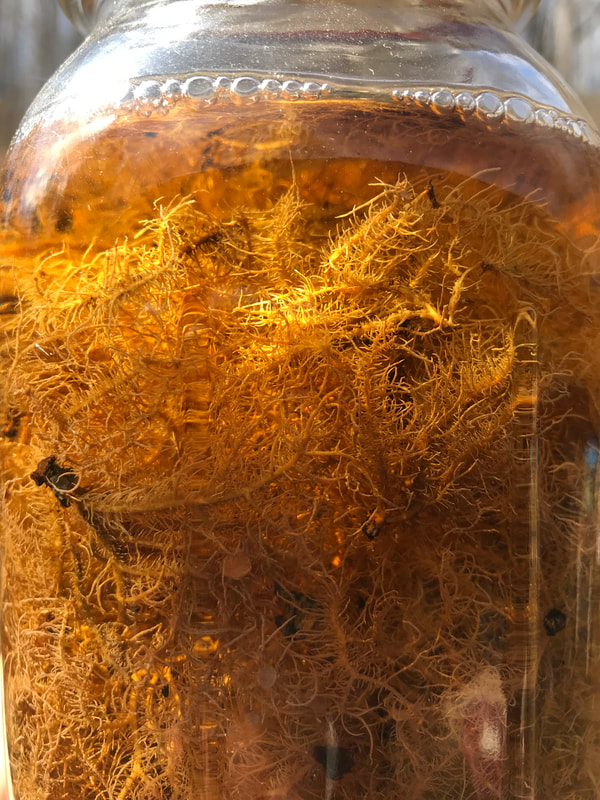

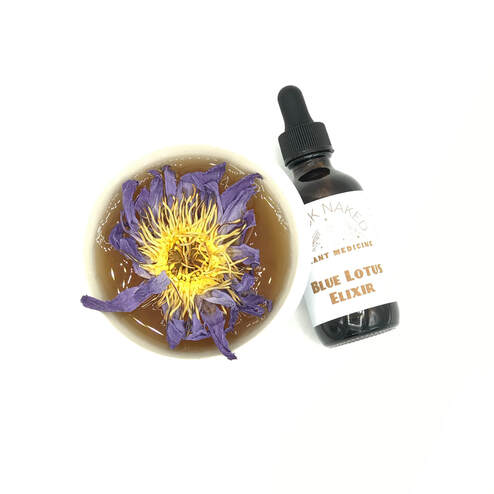
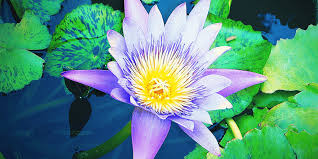

 RSS Feed
RSS Feed